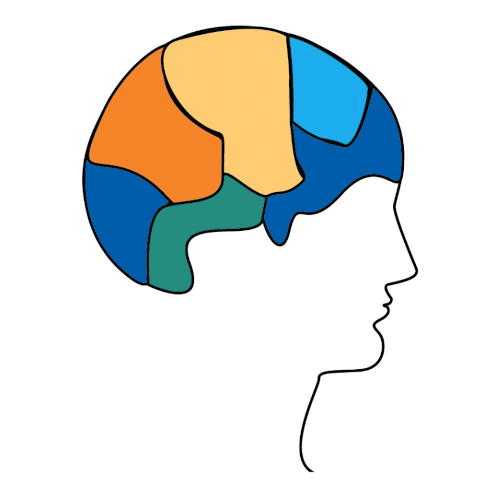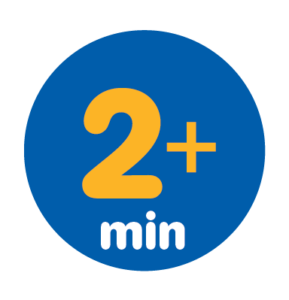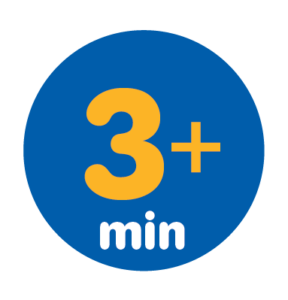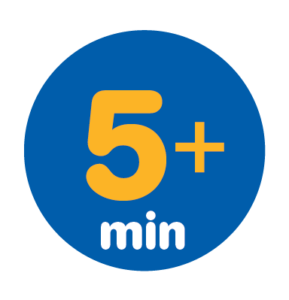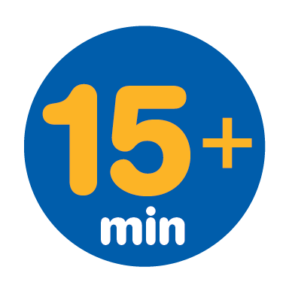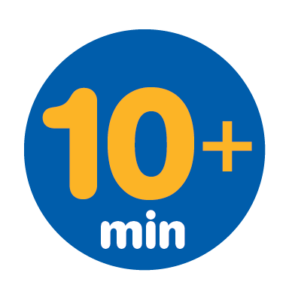Brain Workout 2.0 Class 16 Pilot
CLASS 16 | RELAXING SIGHTS
Engage in visualization and breathing exercises for improved mood and focus.
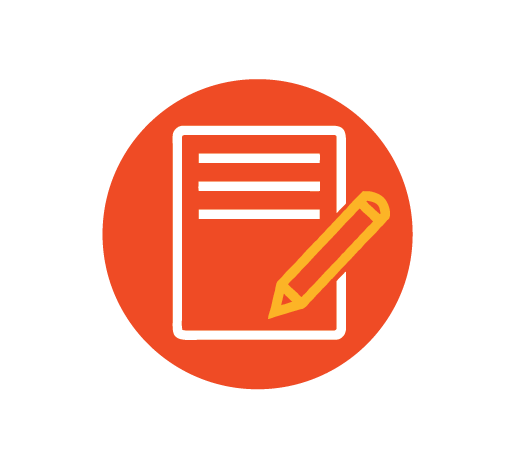
TRAINER OVERVIEW
- Timer or stopwatch
- Now Do It! worksheets, enough for each student
Expert Opportunity! Invite someone familiar with mindfulness or meditation to co-lead the class
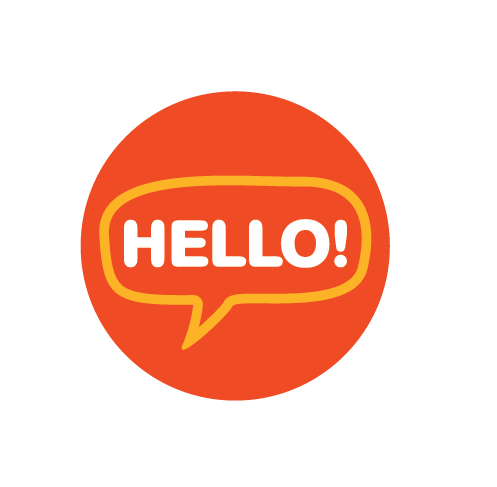
WELCOME TO CLASS
Welcome to today’s class! Our topic is “Relaxing Sights.”
Our TBH Blueprint focus is the “Keep Emotional Balance” action point.
Research shows that using visualization to help us focus and relax can have cognitive benefits. We’re going to explore together different ways in which we can accomplish this.
We will be working on the following thinking skills today:
- Perception
- Attention
- Coordination
- Nimbleness
- Visual Skills
- Memory
Hand out the TBH Welcome Packet to all new students for a more complete introduction.
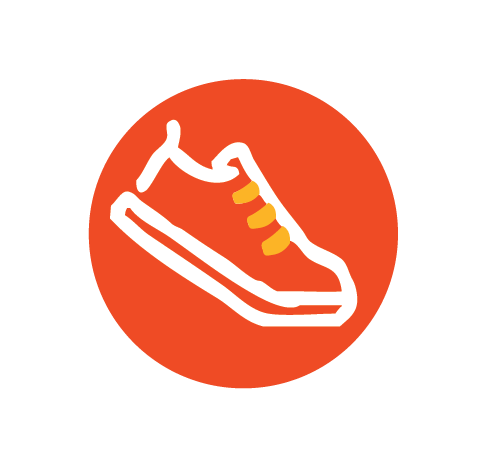
TBH LET'S GET IT STARTED
We are going to begin with TBH Let’s Get It Started!
Being physically active is great for our brains. This quick warmup is a great way to get focused, build energy and get us ready to learn. We’ll do this right at our seats at the beginning of every class. Just watch what I do and follow along!
(At end of warmup) Great job, everyone! We are started up and ready to go!
FEET GET STARTED!
- Lift toes to the sky for 5 beats. Feel the stretch while counting together from 1 to 5.
- Lift heels off the floor for 5 beats. Feel the stretch while counting backwards from 5 to 1.
- With feet on the floor, curl your toes tightly and hold for 5 seconds, counting backward E to A. Relax then repeat once more.
LEGS GET STARTED!
- Gently kick legs out from the knee, alternating legs. 8 repetitions. Count together backward from H to A.
- While sitting tall with feet together, gently swing right leg open to the right and tap toes. Then bring legs together. 5 repetitions. Count backward 5 to 1.
- Repeat with left leg swinging it open and tapping toes to the left side. Then bring legs together. 5 repetitions. Count backward from 25 by 5’s (25, 20, 15, 10, 5).
- Stamp feet on the ground, alternating feet. Make “noise” with group.
BACKS GET STARTED!
- While seated, gently twist upper body to the right. Hold and count together 1 to 5.
- Repeat to the left, gently twisting the upper body to the left. Hold and count together 1 to 5.
- Reach arms forward, gently rounding the upper back. Hold for 5 counting E to A, then reach arms up, straightening upper back. Hold for 5 seconds. Count A to E.
ARMS GET STARTED!
- Gently shake arms at the side of the body, open and close hands.
- Circle wrists a few times clockwise and counterclockwise.
- With arms straight in front, use right hand to gently pull left-hand fingers up to the sky for a nice forearm stretch. Hold for 5 seconds. Count by 2’s (2,4,6,8,10). Then, use the right hand to help gently push the left-hand fingers down towards the floor for another stretch. Hold for 5 counts. Count backwards by 2’s. (10, 8, 6, 4, 2).
- Repeat on the other side. With straight arms, use left hand to gently pull right-hand fingers up to the sky for a nice forearm stretch. Hold for 5 seconds. Count A to E. Then, use the left hand to help gently push right-hand fingers down towards the floor for another stretch. Hold for 5 counts. Count E to A.
- Slowly circle shoulders to the front. 3 repetitions. Circle shoulders to the back. 3 repetitions. Count together 1 to 3 and then 3 to 1.
VOICES GET STARTED!
- Say “OHHHHHHHHHH.” Have group say sound with you. Hold for a few seconds. Try lifting eyebrows while making noise for a surprised facial expression.
- Say “EHHHHHHHHHH.” Have group say sound with you. Hold for a few seconds. Try smiling while vocalizing.
- Say “AHHHHHHHHHH.” Have group say sound with you. Hold for a few seconds. Try frowning while making noise.
- SSay “OH – EH – AH.” Hold each sound for a few seconds. 3 repetitions. Use the facial expressions for each sound.
- Say “I wish to wash my wristwatch.” Repeat this famous tongue twister exercise, focusing on articulation and participation. 3 repetitions.
BREATH GETS STARTED!
- Slow focus to bring awareness to sitting still in chair.
- Take a deep breath in through the nose and out through the mouth.
- Give a full body shake and a wiggle.
- Give selves big hug, wrapping arms across waist and squeezing gently, as able.
- Thank selves and send some “TBH love” to our brains!
Click to open the TBH Let’s Get It Started! playlist.
Click for the TBH Let’s Get It Started! complete guide.
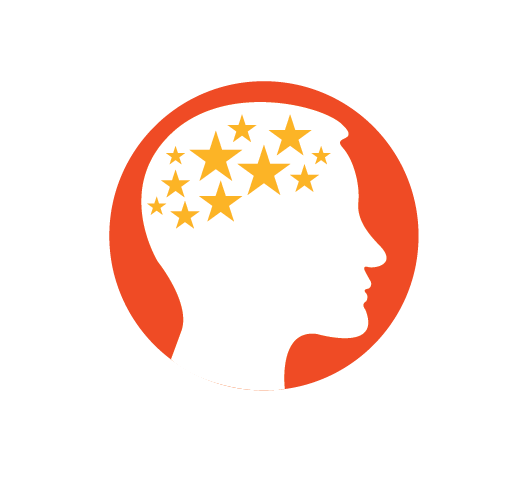
TBH BRAIN PLAY | Walking Sights
- Get everyone ready to learn with this fast-paced cognitive warmup.
- Challenge your students to participate in a mindfulness walk.
Today’s “Brain Play” is called “Walking Sights.”
In a moment we will take a short walk together. During that walk, I’d like you to focus your attention completely on the things that you see as we make our way. Let’s stay quiet as we walk, to make it easier to stay focused. Afterwards we’ll talk about our experience.
- Lead this quick cognitive warm up to build attention, processing speed, nimbleness and other cognitive skills, as well as group connection.
- Lead the class on a walk around the classroom, building or outdoors.
- Ask students to fully focus on what they see as they walk, avoiding other distractions.
- After about 3 minutes, bring students together to discuss their experience of the walk.
- When repeating this class, visit a different location.
- Encourage distance learners to join in from home.

LEARN THE TBH SCIENCE
Who here has practiced mindfulness before? Mindfulness is the practice of being mindful, or aware of our own experience in the moment.
Regular mindfulness has been linked to improved intellectual performance. Researchers at the University of California, Santa Barbara studied a group of students who took a two-week mindfulness training course. They found that the students performed better on memory tasks at the end of the course, and they upped their scores on the Graduate Record Examination (GRE), a common standardized test.
Mindfulness comes in many forms, ranging from breathing to prayer to chanting. One popular tool in mindfulness is visualization. To use visualization, you simply need to add a visual image in your mind’s eye as you practice mindfulness. For example, you might picture a special place or event from your life, one that makes you feel happy, secure and protected.
Adding visualization has been shown to make it easier to stay mindful. The combination of a visual image with breathing and other aspects of mindfulness practice adds to your effort, making it less likely therefore that you will be distracted or let your mind wander.
While we all benefit from using visualization during meditation, those of us that are more visual by nature may find that using these types of mindfulness approaches comes very easily. For the rest of us, it may be that tapping our visual focus helps us stay with the mindfulness activity in ways we can’t anticipate. That’s another reason we brain train better in groups: we can learn from each other. Let’s see!
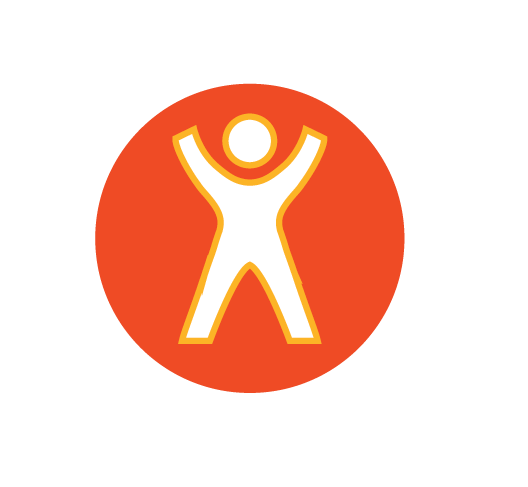
NOW DO IT!
Today we are going to try 1 or 2 visualization exercises. I’d like you to notice how these visualization practices impact your awareness, your focus and your mood.
These are healthy practices you can easily do on your own, each day. We’ll take some time to share how we feel after each one. As we try them together, think about what you like and could work into your regular routine.
- Option to distribute the Now Do It! class worksheets.
- Use the instructions below to lead your students through the Breathe Into Your Heart workout. When done, allow time for group members to discuss their experience.
- If time allows, lead your students through another one of the breathing workouts below, again allowing time for group members to discuss their experience.
- When repeating this class, select a different breathing workout.
- For virtual delivery, encourage distance learners to join in from home.
“BREATHE INTO YOUR HEART” WORKOUT
1. Find a comfortable seat, with your arms supported and your legs resting on the floor.
2. Close your eyes.
3. Now focus your attention on your breathing. Become aware of the rate and rhythm of your breath. Begin inhaling slowly and deeply through your nostrils.
4. As you continue, imagine yourself breathing into your heart each time you take a breath.
5. Now in your mind’s eye, picture something that makes you feel wonderful. This image can be anything from your life: past, present, people, objects, achievements etc. “See” this powerfully pleasant image as clearly and vividly as you can. Hold it in your mind’s eye.
6. Repeat for several minutes, breathing into your heart as you hold in your mind’s eye this wonderfully pleasant image.
7. Gently open your eyes. How do you feel?
“SAFE PLACE” WORKOUT
1. Find a comfortable seat, with your arms supported and your legs resting on the floor.
2. Close your eyes.
3. Now focus your attention on your breathing. Become aware of the rate and rhythm of your breath. Begin inhaling slowly and deeply through your nostrils.
4. Now imagine in your mind’s eye a place that makes you feel safe. A safe place can be a person, a thing, or a place – simply anything that creates in you a sense of belonging, calm and being cared for and loved. Spend the next moments finding your safe place.
5. Continue breathing deeply and slowly as you focus on the image of your safe place, holding in your mind’s eye this wonderfully pleasant image. Imagine as vividly as you can that “safe place,” keeping your attention on the sense of healing and security it brings you.
6. Gently open your eyes. How do you feel?
“THE END IN SIGHT” WORKOUT
1. Find a comfortable seat, with your arms supported and your legs resting on the floor.
2. Close your eyes.
3. Now focus your attention on your breathing. Become aware of the rate and rhythm of your breath. Begin inhaling slowly and deeply through your nostrils.
4. Now think of a task that you want to achieve, something you need to get done, a personal goal or lifelong dream.
5. Next, visualize yourself having accomplished that task. See yourself in your mind’s eye having completed everything you need to have done to get there.
6. Continue breathing deeply and slowly as you hold in your mind’s eye this wonderfully pleasant image. Experience what it feels like to have accomplished exactly what you set out to do. Imagine others responding to your success.
7. Gently open your eyes. How do you feel?

TBH TAKEAWAY
Today we tried visualization together. Visualizing a positive image or outcome can be a wonderful way to practice mindfulness, and which can boost attention and focus, alleviate stress and promoting emotional well-being.
The exercises we learned today can be experienced differently by each of us. It’s great to try new things, both to see if we like them and as a way of engaging our brains in new and novel ways. If you liked the visualization practices we did today, I hope you will continue to do them on your own.
Can you think of a time you will try using a visualization practice in the week ahead?
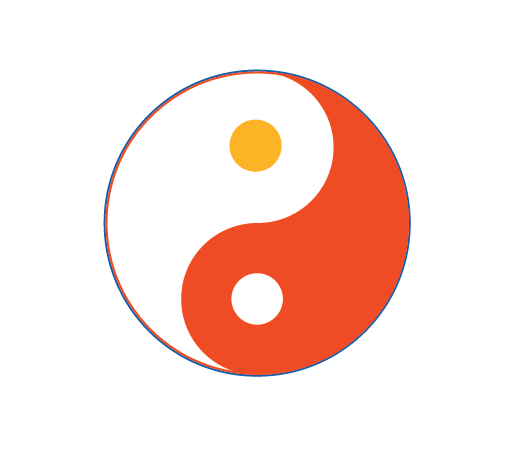
TBH TAKE A BREATH
Let’s wrap up with “TBH Take a Breath.” Being mindful of our breath and sharing some positive thoughts is a wonderful way to acknowledge what we’ve learned together before we go back to our day. Research also shows that these kinds of exercises help us focus better and even learn more effectively.
- Have students get comfortable, resting both feet flat on the floor, hands resting in their laps.
- Have students close their eyes and keep them gently closed.
- Ask students to focus their attention on their breathing, noticing the rate and rhythm of their breath. Allow them to focus on their natural breathing for a few moments.
- Instruct students to begin rhythmic breathing. Ask them to inhale slowly and deeply through their nostrils, breathing gently into their chest and belly. Then ask them to exhale slowly through their lips, slowing the rate and rhythm of their breath.
- Have students continue rhythmic breathing, instructing them to continue to focus on gently and slowly inhaling and exhaling, allowing their attention to simply “ride” the wave of their breath. Allow them to focus on rhythmic breathing for several moments.
- Offer the following positive affirmation statements below in a calm, slow voice. Invite students to simply listen, repeat the phrase silently to themselves, or to think about what each statement means to them.
My mind is relaxed.
I am grateful for a healthy brain.
I am grateful for the opportunity to see new things.
I am grateful for the support of my classmates.
I take this time and this breath for me.
- Pause for several moments.
- End the exercise by inviting students to bring their awareness back to the room, gently opening their eyes and becoming more aware of their surroundings.
- Invite them to end practice with gratitude for taking a moment for themselves, for the chance to learn together and connect with each other.
Click for the TBH Take a Breath music playlist.
Click to open the TBH Take A Breath complete guide.

COMING UP NEXT!
I am so glad we had this time to learn together today. It was nice to give our brains a boost and connect with each other.
I look forward to seeing you for our next Total Brain Health class. Be sure to bring a friend!

CLASS RESOURCES
NOW DO IT! WORKSHEETS
Use these optional worksheets to run your class.
Relaxing Sights Worksheet. Use this worksheet to support the class exercise as needed.
ADDITIONAL RESOURCES
Kripalu. Kripalu, a leading center for yoga, spirituality and wellness, offers an extensive section of resources on their website that would be useful to share in class.
Headspace. This popular mindfulness app leads the user through guided meditation practices, many of them visually-based routines.

